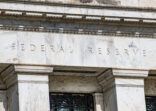The current slowdown phase is different from the past in many ways, most notably in terms of the potentially better performance that investors can expect to see from risk assets.
Typically, this stage of the US economic cycle would suggest a more cautious stance towards equities and credit markets. Yet this is not the case today.
“Investors should recognise that this cycle is proving to be rather different, as inflation is falling as we enter the slowdown. This may indicate that growth could be more resilient, and the Fed has greater flexibility to ease monetary policy,” said Tina Fong, strategist at Schroders.
It also reduces the risk of a slowdown followed by a recession, she explained, which can create a more negative environment for risk assets.
“Overall, the investment playbook based on previous slowdowns may be different this time,” Fong added.
A different type of slowdown
In the past, inflation has typically risen and peaked during economic slowdowns, as the tightening of monetary policy by central banks eventually slows growth. In turn, this causes unemployment to rise and the output gap to shrink.
From the point of view of equities and credit markets, not only does corporate profitability get hit by weaker economic activity and demand, according to Fong, but profit margins are also squeezed from higher costs from rising wages and interest rates. “Instead, during the slowdown phase, the performance winners have been commodities and government bonds.”
Fong believes the root of the unusual inflation dynamic at the moment – where inflation is falling – comes from the after-effects of the Covid pandemic in 2020.
“The pandemic led to an imbalance between supply and demand for goods, which fuelled inflation to surge in 2022. This was further exacerbated by the Ukraine-Russia conflict and supply chain disruptions in China during Covid,” she explained.
Equities to benefit
While economic activity in the US is likely to slow over the coming months, the fall in inflation could create a less challenging landscape for equities.
In particular, the improvement in the inflation picture reduces the risk of recession and provides the Fed with more flexibility in cutting interest rates, said Fong.
“The average returns of the S&P 500 have tended to be more positive when interest rates have fallen,” she added.
At the same time, slowdown periods followed by expansions rather than recessions tend to be a more positive environment for equities. “If economic activity turns out to be more resilient, both growth and corporate earnings can recover back to a reflationary setting,” said Fong.
This contrasts with slowdowns that result in recession, which are usually environments where there is a significant contraction in growth, which materially hits corporate earnings.

















